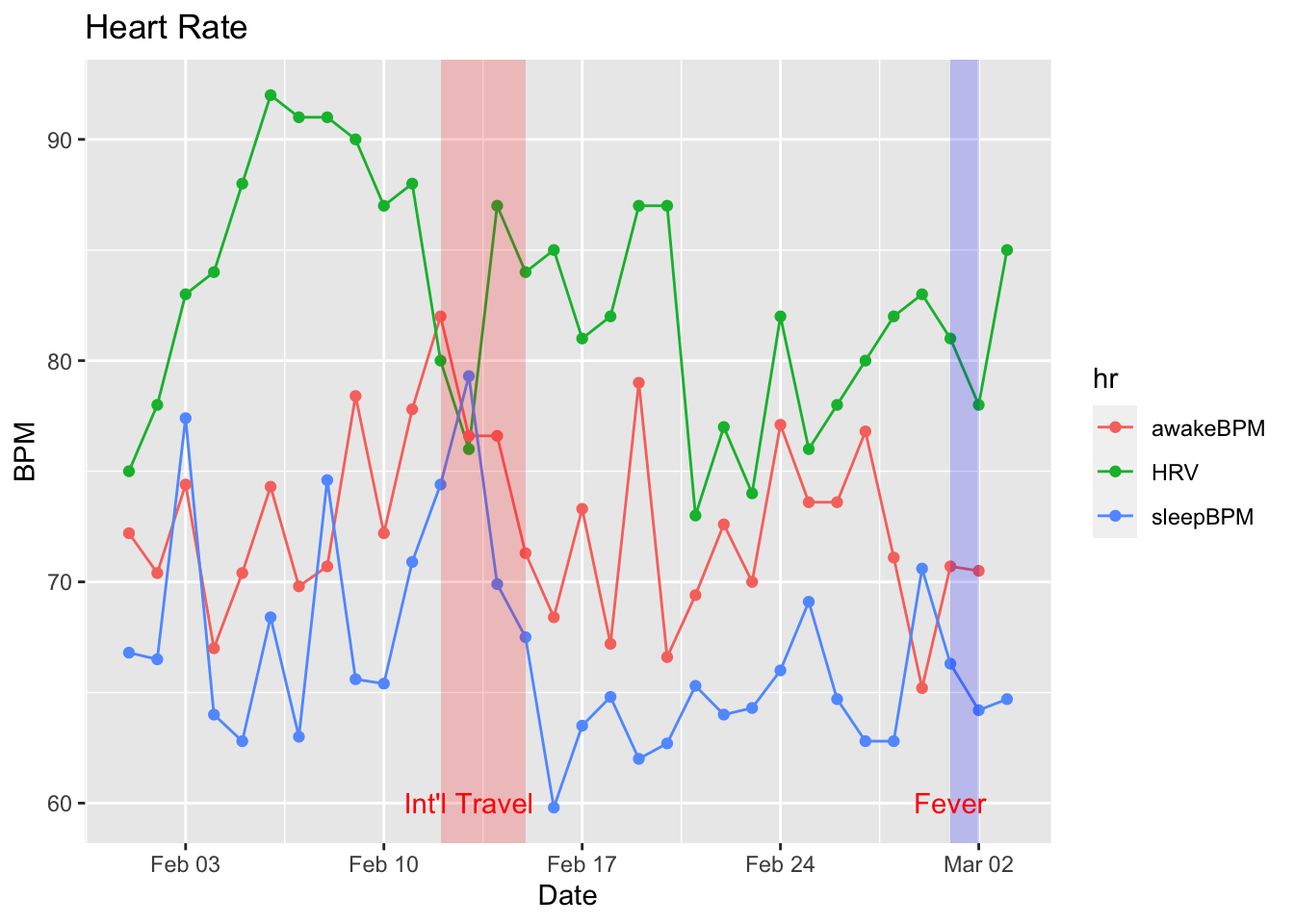Understanding my heart rate
Heart Rate Experiments
There is the concept of heart rate based training, where you push yourself just enough, but not too much, to reach a new goal. Roughly speaking, the typical maximum heart rate is 220 - age, which in my case would be 220-57 = 163.
from Polar’s web site:
- LIGHT: 70-80% (98 - 114)
- MODERATE: 70-80% (114 - 130) “especially effective for improving the efficiency of blood circulation in the heart and skeletal muscles”
- HARD: 80-90% (130 - 146)
But according to my Helix Apps Heart Analyzer app, my actual Max heart rate is 177.
If so, then my ideal training “zone” would be between 125 and 140.
Heart Rate and Health
A group from Scripps published in the January 2020 Lancet the results of a study of the RHR of 50K Fitbit users. They found a clear correlation with “Influenza-like illness” (ILI) at a population level. In a large enough dataset, when the statewide average RHR goes up from week-to-week, the incidence of flu rises as well.
Can I use my Apple Watch data to predict something similar?
Here are results from a period in February 2020. During this period, I travelled internationally (to Seoul, South Korea at the beginning of a COVID19 epidemic), and a few weeks later felt slightly ill for an evening (but recovered the next morning).

A group from Scripps published in the January Lancet the results of a study of the RHR of 50K Fitbit users. They found a clear correlation with “Influenza-like illness” (ILI) at a population level. In a large enough dataset, when the statewide average RHR goes up from week-to-week, the incidence of flu rises as well.
Before getting too excited, remember that there is also apparently a relationship between Twitter activity and ILI at the population level. My guess is that you won’t find much value in watching your personal Twitter feed to measure your likelihood of getting the flu, and RHR is probably similar – works, kinda-sorta, at the population level, but too much signal to be useful for individuals.